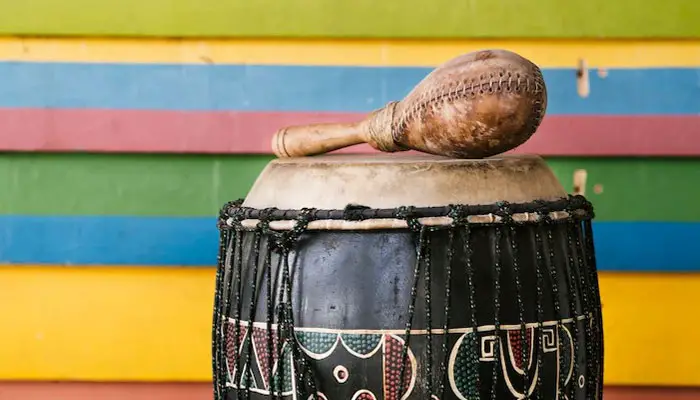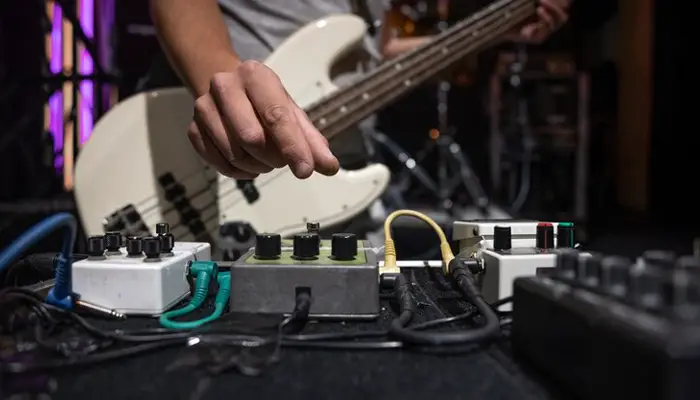
Are you eager to explore the captivating rhythms of the bongos?
Learning to play this iconic percussion instrument can be not only enjoyable but also a fulfilling journey into the world of music.
In this comprehensive guide, we’ll take you through 11 simple steps to kickstart your bongo-playing adventure, from mastering the basics to playing some simple tunes.
By the end of this tutorial, you will be able to play some basic songs on the bongos!
Table of Contents
Understanding Bongos:
Before we delve into the steps, let’s acquaint ourselves with the bongos. Originating from Africa and later embraced in Latin America, bongos consist of two drums – the larger “hembra” and the smaller “macho”. Played with both hands, bongos offer a versatile range of rhythmic possibilities, making them a cornerstone of various music genres.
From the rich history of African drumming traditions to their integration into Latin American music, understanding the cultural significance of bongos adds depth to your learning journey.
How to Play the Bongos (11 Easy Steps)
Now that you know a little bit about bongos, let’s learn how to play them! Follow these 11 easy steps, and you’ll be playing the bongos in no time.
Step 1: Selecting the Right Bongos
Choosing suitable bongos is essential for comfortable playing. Consider factors such as size, type (conga or tambourine), and material (wood, plastic, or metal) to find the best fit for your preferences and hand size. Research various brands and models to ensure you make an informed decision.
Additionally, explore the diverse range of bongo designs, from traditional to modern, to find a style that resonates with you.
Step 2: Inspecting Your Bongos
Before you begin, thoroughly inspect your bongos for any damage or looseness in screws. Check the quality of the drumheads and ensure they are securely attached. Pay attention to the overall craftsmanship of the bongos to ensure they meet your standards for performance and durability.
Familiarize yourself with the anatomy of the bongos, including the tension rods, lug nuts, and bearing edges, to understand how they contribute to the instrument’s sound and playability.
Step 3: Finding Your Drumming Position
Experiment with standing, seated, or kneeling positions to discover which is most comfortable and suitable for your playing style. Consider factors such as posture, arm positioning, and ease of movement when determining your preferred drumming position.
Remember that finding the right position can significantly impact your playing experience and overall performance. Explore ergonomic accessories such as drum thrones and ergonomic drumsticks to enhance your comfort and support during extended practice sessions.
Step 4: Proper Bongo Grip
Hold your bongos correctly by positioning the larger drum in your left hand and the smaller one in your right. Maintain a relaxed grip on the drums, allowing for fluid movement and control. Position the bongos at a comfortable angle, ensuring that you can strike the drumheads with ease and precision.
Experiment with different grip techniques, such as the traditional Cuban grip or the matched grip, to find a style that suits your playing technique and musical preferences.
Step 5: Identifying the Ideal Drumming Surface
Choose a stable surface such as a table, chair, or your lap to avoid unnecessary movement while playing. Ensure that the surface is flat and level to provide a consistent and reliable platform for your bongos. Consider using a non-slip mat or cushion to prevent the drums from sliding during intense playing sessions.
Experiment with different playing surfaces, such as drumming pads, to alter the resonance and feel of your bongo playing.
Step 6: Tuning Your Bongos
Using a tuning key or your ear, ensure your bongos are correctly tuned before beginning your practice session. Experiment with different tension levels on the drumheads to achieve the desired pitch and tone. Listen carefully to the sound produced by each drum and make adjustments as needed to achieve optimal tuning.
Explore online tutorials and resources to learn advanced tuning techniques, such as interval tuning and pitch matching, to refine your bongo sound further.
Step 7: Creating Basic Rhythms
Start with the fundamental rhythm known as “tambora” – a simple sequence of “ta” and “ma” played on the larger and smaller drums, respectively. Focus on maintaining a steady tempo and rhythm as you practice. Experiment with variations in dynamics and accents to add depth and expression to your playing.
Explore the role of syncopation and polyrhythms in bongo playing to develop your rhythmic vocabulary and creativity.
Step 8: Experimenting with Sound
Unlock your creativity by experimenting with different striking techniques and drumming positions to produce unique sounds. Explore the full range of tones and timbres that your bongos can produce by varying the angle, force, and speed of your strikes.
Pay attention to the nuances of sound and texture as you explore different playing techniques. Experiment with accessories such as brushes, mallets, and brushes to expand your sonic palette and create atmospheric textures in your bongo playing.
Step 9: Adding a Bass Drum
Enhance your bongo playing by incorporating a bass drum, enriching your rhythms with a fuller sound. Experiment with adding bass notes to your rhythmic patterns to create a more layered and dynamic sound. Coordinate your bass drum strikes with your bongo playing to create cohesive and harmonious rhythms.
Explore the use of foot pedals and electronic drum triggers to integrate bass drum sounds seamlessly into your bongo setup, allowing for greater flexibility and creativity in your playing.
Step 10: Exploring Various Playing Styles
Delve into the diverse world of bongo playing styles, from traditional Latin rhythms to contemporary fusion techniques. Study the techniques and repertoire of accomplished bongo players across different musical genres. Experiment with incorporating elements of different styles into your playing to develop your unique voice as a bongo player.
Explore the rhythmic intricacies of genres such as salsa, jazz, funk, and Afro-Cuban music to expand your musical horizons and inspire new ideas in your bongo playing.
Step 11: Practice, Practice, Practice!
Consistent practice is key to mastering the art of bongo playing. Dedicate time each day to hone your skills and explore new techniques. Set specific goals for each practice session and track your progress over time. Be patient and persistent, and don’t be afraid to challenge yourself with new rhythms and techniques.
With dedication and perseverance, you’ll steadily improve your bongo playing skills and unlock new levels of musical expression.
Conclusion: How to Play the Bongos
Embarking on the journey to learn the bongos is both enriching and rewarding. By following these 11 easy steps and embracing a spirit of exploration and practice, you’ll soon find yourself confidently playing the bongos with ease. Whether you’re jamming with friends, performing on stage, or simply enjoying the rhythmic groove on your own, the bongos offer endless possibilities for creativity and expression.
So pick up your drumsticks, feel the rhythm coursing through your veins, and let the music take you on an exhilarating journey of discovery and self-expression. Happy drumming!
Just remember to practice regularly, and don’t be afraid to experiment with new sounds and techniques. Soon you’ll be a bongo master!
Frequently Ask Questions
Is it easy to play the bongos?
Yes, playing the bongos is relatively easy. However, it does take some practice to become proficient.
What type of bongos should I buy?
There are many different types of bongos available on the market. The best type of bongos to buy depends on your budget and playing style.
How do you get good at bongos?
The best way to improve your bongo playing skills is to practice regularly. Set aside time each day to practice your rhythms, and don’t be afraid to experiment with new sounds and techniques. Soon you’ll be playing the bongos like a pro!
That’s all for the guide of how to play the bongos for beginners. You can also check out 35+ Killer Musical Instruments that Start with B and What Is the Easiest Instrument to Learn? (Affordable).



